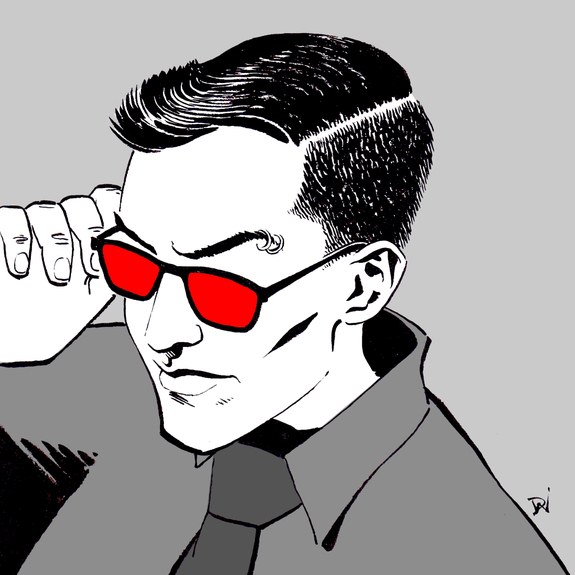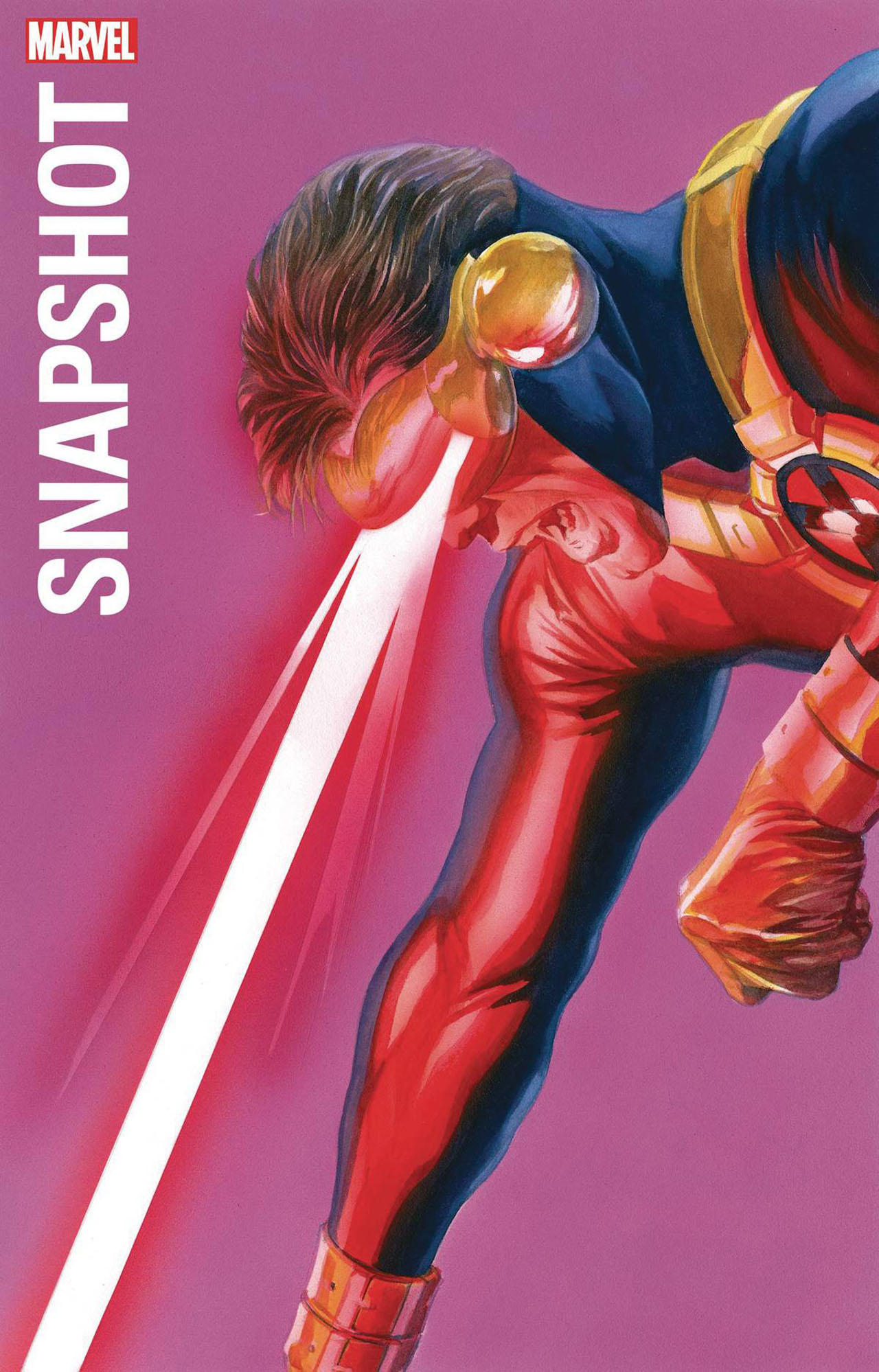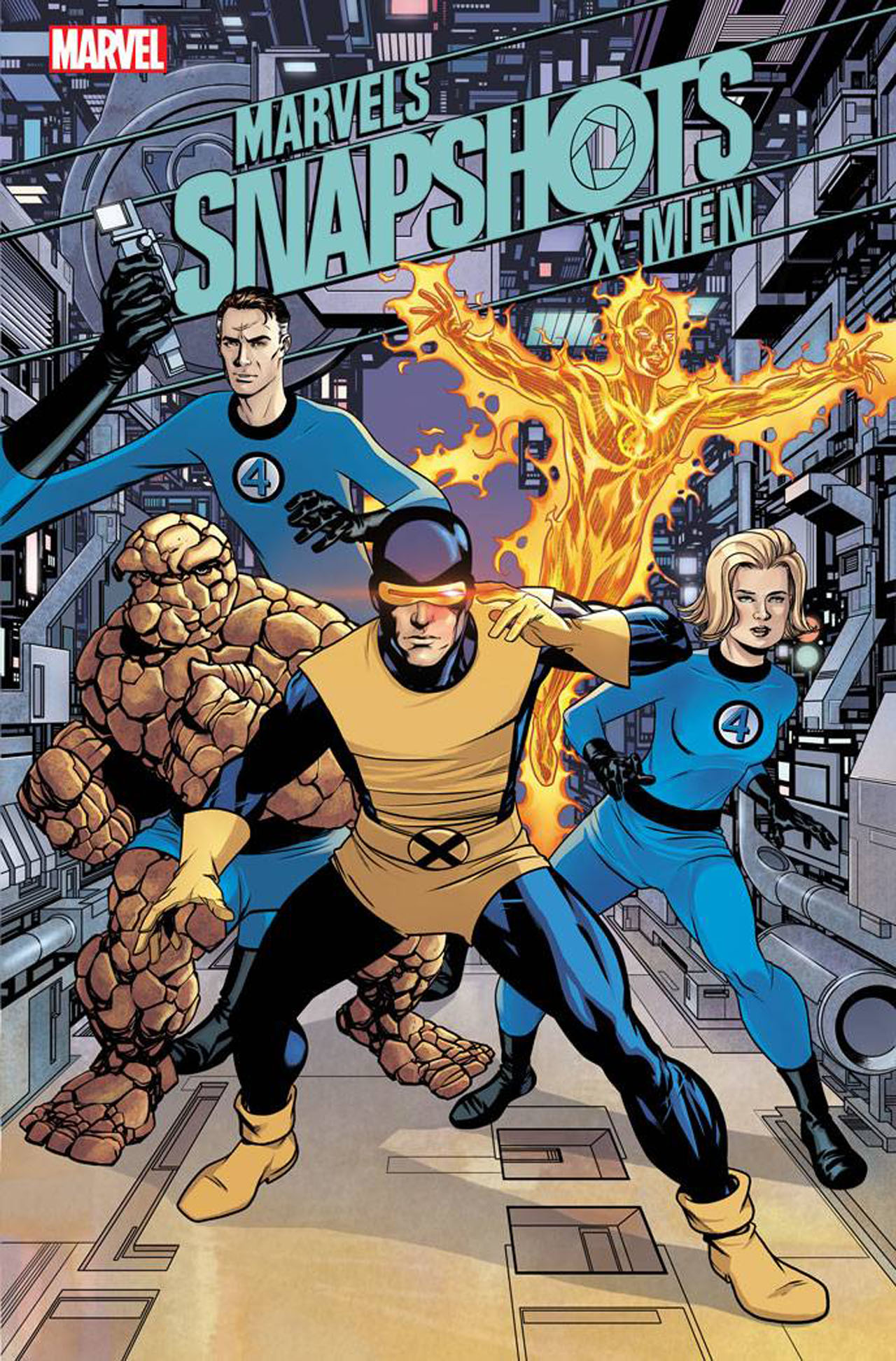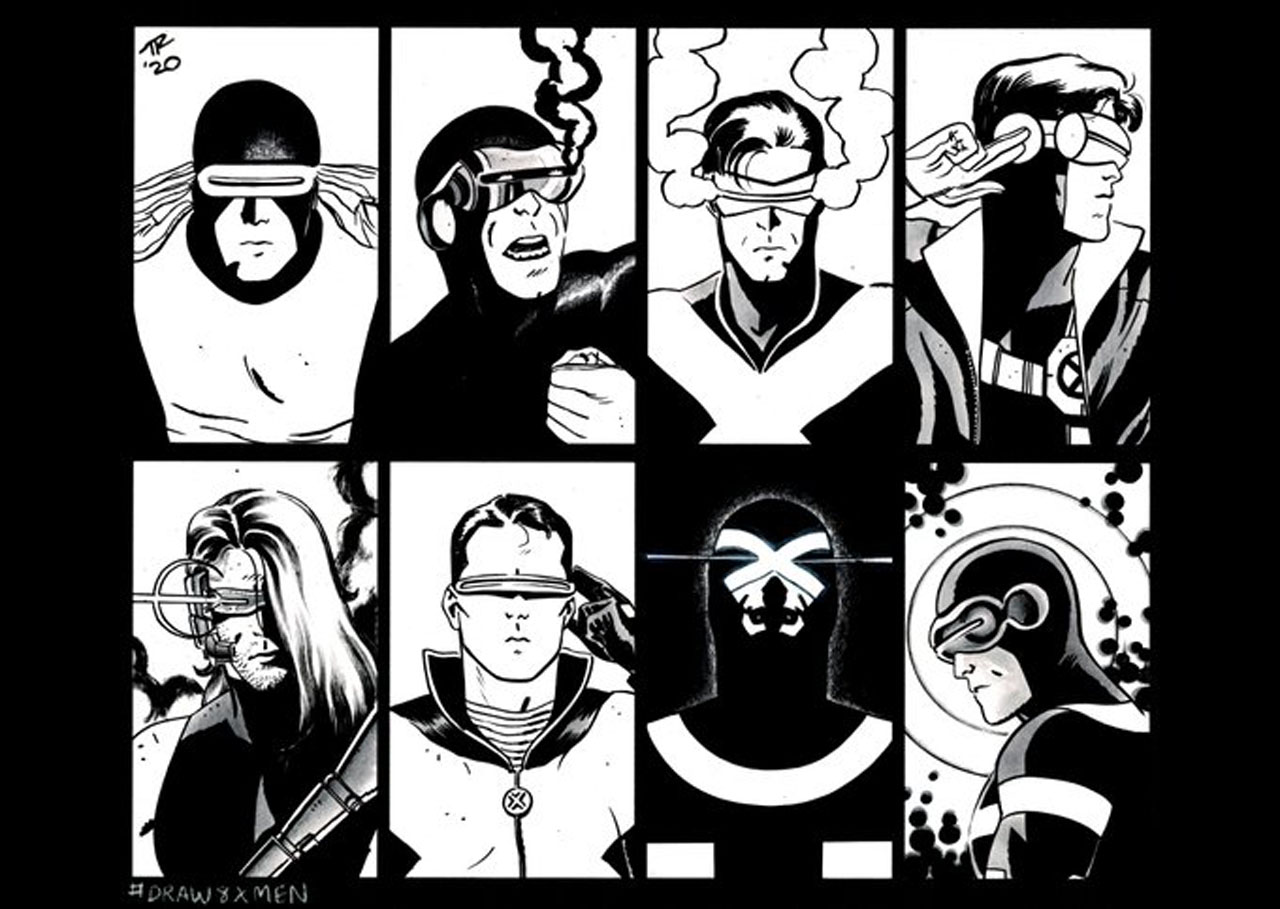Cyclops witnesses the birth of the Marvel Age of Heroes in Marvels Snapshots: X-Men
With one of the foremost x-perts

Kurt Busiek's whirlwind revisiting of classic Marvel continuity in Marvels Snapshot continues with a one-shot about the perennial X-Men leader Cyclops - written by one of the biggest Cyclops experts we know.
X-Plain the X-Men's Jay Edidin makes his Marvel Comics debut with September 16's Marvels Snapshots: X-Men. Working with artist Tom Reilly, Edidin goes back to Scott Summers' formative years as a teen, living in an orphanage after the apparent death of his parents and the first explosion of his powers.
In this one-shot, Edidin and Reilly will follow Summers as he acclimates himself to the world around him and learns about the then-burdgeoning age of heroes cropping up at the same time - especially the birth of the Fantastic Four.
Edidin talked with Newsarama about this standalone one-shot, how he's digging deep into Marvel lore, and his own fandom of the man they call Slim.
Newsarama: Jay, x-plain to me what people can look forward to with your X-Men: Marvels Snapshot one-shot?

Jay Edidin: The elevator pitch is, "A teenage Scott Summers imprints on the Fantastic Four like a confused baby duck."
The slightly longer version is that it's a story about the ways that paper mirrors - characters (or, in this case, in-universe real superheroes) we identify with - can be both lifelines and tools to claiming agency.
Get the best comic news, insights, opinions, analysis and more!
Also, it's just ridiculously, ludicrously gorgeous. Seriously. You have no idea. Tom Reilly and Chris O'Halloran are multiversal treasures.
Nrama: We'll be returning to talk about them in a bit.
This one-shot revisits Scott in his early years, at the orphanage - under the watchful gaze of Mr. Sinister, unbeknownst to him. What's it like for Cyke there?

Edidin: Not great! I've described this story a few times as taking place between the scenes of a larger horror story, which I think is pretty much universal to stories set at the orphanage - at least, the ones that aren't horror stories outright.
For all Sinister's mad science and medical torture and murder, the thing that's always disturbed me most about the orphanage years is the subtle ways he messes with Scott's mind, both directly and through continual gaslighting. It's not just that he rewrites the inconvenient bits - Sinister effectively destroys Scott's confidence in his own memory or perceptions, which is a horrific thing to do to any kid, and doubly brutal for a kid who's already dealing with a traumatic brain injury. He's living in this absolutely nightmarish place, but by the time he's 15 or 16 - when this story takes place - he's pretty much accepted the idea that the reason everything around him feels subtly and inescapably wrong is that he's just fundamentally broken.
Incidentally, a cool side effect of that awful situation is that you can use it to reconcile inconsistencies in continuity because Scott himself canonically has a lot of directly conflicting memories of his early life. It also gave me the freedom to keep the things that served this story and not get too mired down in the rest.
Nrama: How is he learning about the burgeoning Marvel age in the relatively secluded Nebraska orphanage?
Edidin: The same way everyone else is: TV, magazines, and the massive cultural zeitgeist that followed the emergence of the Fantastic Four. The difference with Scott - at least from the people immediately around him - is that when he obsesses, he obsesses hard, so once he's latched onto this idea, he's immediately elbows-deep in research.
Nrama: How big a role does Mr. Sinister play in this, if any?
Edidin: Canonically, about half the people at the orphanage are Mister Sinister; but that's not technically relevant to this story, nor is it a detail that anyone who's not familiar with that backstory - or reading this interview - is going to pick up on. He's more of a setting than a character here.

Nrama: Jay, we've been through a lot together, and you've always been one of my X-Men - and particularly Cyclops - experts. You've even cosplayed as Cyclops numerous times. What's it like for you now to be writing Slim?
Edidin: I think I described it in an earlier interview as "an anxiety dream come true." Like every die-hard fan, I secretly believe that my read of the character is the correct one, and it was really neat to be able to articulate some of the corners of that into canon.
At the same time, as an editor and critic, I'm acutely aware that there's a massive gulf between loving and identifying with a character and writing a good story about them, and I was initially so on guard about not projecting that I risked losing a lot of the emotional honesty of the story.
That said, what actually turned out to be the hardest part was distilling down the details to the ones that matter in this particular story. There are a lot of cool narrative hooks and incidents and details about the orphanage in particular that I would have loved to have had the room to run with, but which ultimately didn't fit in this comic.
Nrama: You're working on this with Kurt Busiek, who is acting as shepherd/showrunner/guide to these Marvels Snapshots. How would you describe the working relationship?
Edidin: It was the best kind of challenging. Kurt is very much an editor's editor. He's been honing his sense of how comics work, and why, and how those sensibilities intersect with and inform and are informed by the peculiarities and minutiae of continuity and genre for longer than I've been alive. As a formalist who really loves that kind of granular construction, working with Kurt was an incredibly in-depth master class in a very specific and thoughtful approach to writing comics in general and shared-universe superheroes in particular.
All that aside, Kurt is also the guy who wrote the first comic I was ever credited in. When I went freelance seven years later, he was the first person who sent me a pull quote for my fledgling professional website. He's had my back, professionally and personally, since the literal day one of the 14 years I've worked in comics. And by the time he approached me about this, we'd been friends long enough that I had a pretty good idea both of how much he cares about Cyclops and what it meant that he was asking me to write this.

Nrama: And on the art side, Tom Reilly. What's he bringing to the table here?
Edidin: Everything. Tom bridges midcentury and modern comics sensibilities absolutely seamlessly, and the result is a comic that's clearly rooted in the Silver Age but never feels dated. He and colorist Chris O'Halloran are both just tremendous storytellers, and they've shaped this comic in ways that go way beyond anything I could have imagined or expected going in. They're also just great dudes and a pleasure to work with.
While I'm gushing: It's cool that I got to write a story about my favorite X-Man, but honestly, the thing that still hasn't stopped blowing my mind is that I got to write an X-Men comic lettered by Tom Orzechowski.
Nrama: In another life, you and I were part of Project: Rooftop, which focused on superhero costume design. What can you say about Cyke's design here, and what can you tease for fans of the visor, the glasses, and all that?

Edidin: For the most part, this is a story about Scott figuring out the things he's going to need to have figured out to eventually become Cyclops, so the places where we talked a lot about design had more to do with street clothes and how to stay true to Scott's Silver Age nerd aesthetic without looking silly or dated. Very early on, while Tom was working on the variant cover, there was a really long, intense discussion over whether to put Scott in plaid pants; and I have never felt more qualified to be part of a professional conversation in my entire life.
The glasses show up eventually, as does one iteration of the visor. And Tom's all-time favorite Cyclops costume detail - which I will not spoil - makes an appearance on the very last page.
[Editor's Note: This article originally ran in April 2020, but has been updated with a new release date following the COVID-19 related distribution shutdown.]
Chris Arrant covered comic book news for Newsarama from 2003 to 2022 (and as editor/senior editor from 2015 to 2022) and has also written for USA Today, Life, Entertainment Weekly, Publisher's Weekly, Marvel Entertainment, TOKYOPOP, AdHouse Books, Cartoon Brew, Bleeding Cool, Comic Shop News, and CBR. He is the author of the book Modern: Masters Cliff Chiang, co-authored Art of Spider-Man Classic, and contributed to Dark Horse/Bedside Press' anthology Pros and (Comic) Cons. He has acted as a judge for the Will Eisner Comic Industry Awards, the Harvey Awards, and the Stan Lee Awards. Chris is a member of the American Library Association's Graphic Novel & Comics Round Table. (He/him)



